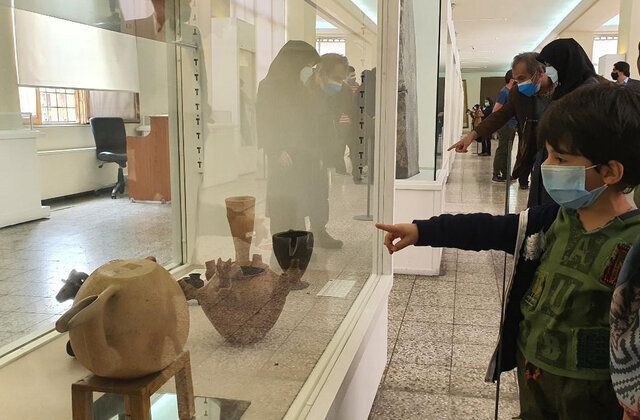Over 6,700 visited National Museum of Iran during Noruz

TEHRAN – A total of 6,714 Iranians and nine foreign nationals paid visits to the National Museum of Iran during the two-week New Year (Noruz) holidays, which ended on April 2, the museum director has said.
Although the museum has ranked one of the top ten most visited sites in the country, the number of its visitors has fallen drastically due to the outbreak of the coronavirus, ISNA quoted Jebrael Nokandeh as saying on Monday.
Last year, coronavirus pandemic forced authorities to shut doors of all museums and historical sites across the country in Noruz holidays, however, the National Museum launched online visits and virtual tours during the mentioned time, through which some 10,000 people explored the prestigious site, the official added.
This year, the museum opened its doors to the public during the holidays, while the visitors and the museum’s staff followed strict health protocols, he explained.
He also noted that different sections of the museum are still accessible through online tours for those who prefer to stay home in a bid to contain the outbreak of the coronavirus.
Earlier this week Mohammadreza Kargar, the director of museums and historical properties at the tourism ministry announced that visits to Iranian museums fell by one-fifth during the recent Noruz holidays in comparison to the same period two years ago when the new coronavirus was not yet an issue.
1,246,102 people visited cultural heritage museums [and sites] during this Noruz, while cultural heritage museums were closed during the Noruz holiday last year (1399) due to strict social distancing measures, the official said.
Iran is home to one of the world’s oldest continuous major civilizations, embracing settlements dating back to 4000 BC. It also hosts some of the world’s oldest cultural monuments including bazaars, museums, mosques, bridges, bathhouses, madrasas, gardens, rich natural, rural landscapes as well as 24 UNESCO World Heritage sites.
The name of Iran, formerly known as Persia, mostly conjures up the first Persian Empire, ruled by the Achaemenids (ca. 550 – 330 BC) and sites such as Pasargadae and Persepolis. However, there are tens of prehistorical sites as the Burnt City in Sistan-Baluchestan, Tepe Sialk in Kashan, Susa and Chogha Zanbil in the Khuzestan province, and Ecbatana in Hamedan which predate the Achaemenid period.
From a wider point of view, Iranian history can be divided into Pre-Islamic and Islamic eras. The Medes unified Iran as a nation and empire in 625 BC. The Islamic conquest of Persia (633–656) that put an end to the mighty Sassanid Empire (224–651) was a turning point in the history of the nation.
The National Museum of Iran embraces priceless relics that represent various eras of the country’s rich history. Its structure was completed in 1928 based on the design by French architect André Godard who was also an archaeologist and historian of French and Middle Eastern Art.
ABU/AFM
Leave a Comment